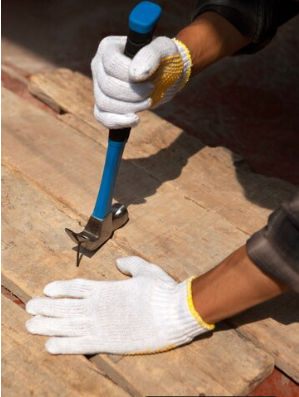Insurance Strategy Adjustments
To protect against tariff-inflated rebuilding costs, review and adjust your insurance coverage regularly. Ensure your homeowners policy includes extended replacement cost coverage, providing 25-50% beyond standard limits to absorb unexpected price increases. Consider adding inflation guard protection, which automatically increases coverage limits annually. For businesses, investigate business income coverage with extra expense provisions that account for increased rebuilding timeframes due to material delays. Most importantly, work with your agent to recalculate rebuilding costs annually, explicitly factoring in tariff impacts on materials relevant to your specific structure.
Material Substitution Planning
Identify alternative building materials less affected by tariffs. Domestically-produced products typically avoid direct tariff impacts, though they may experience price increases from reduced competition. Engineered wood products, concrete-based materials, or recycled composites often provide cost-effective alternatives to heavily-tariffed imported lumber or metals. For specialized components, research multiple manufacturing sources from different countries, as tariffs typically target specific nations rather than all imports universally. Developing these alternatives before rebuilding becomes necessary provides valuable options during high-pressure recovery periods.
Phased Construction Approach
Consider implementing rebuilding projects in strategic phases to manage tariff volatility. Begin with critical structural elements while delaying cosmetic or non-essential components if tariffs appear likely to decrease in the future. Separating projects into distinct phases allows flexibility to accelerate or delay construction based on material price trends. This approach particularly benefits commercial property owners, who can strategically time different aspects of rebuilding to align with market conditions rather than rushing all construction simultaneously.
Supply Chain Partnerships
Develop relationships with local suppliers, contractors, and building material manufacturers before disasters strike. Established customers often receive priority access to limited materials during shortages and may qualify for grandfathered pricing agreements that temporarily insulate from tariff increases. Consider pre-purchasing critical materials for storage if you anticipate significant construction needs and observe rising tariff trends. For businesses, investigate cooperative purchasing arrangements with other companies to achieve volume discounts offsetting tariff impacts.
Tax Strategies
Explore potential tax benefits to offset higher rebuilding costs. Disaster-related casualty losses may qualify for tax deductions, effectively reducing the net impact of tariff-increased expenses. Business owners should investigate accelerated depreciation options for rebuilt structures, which can improve cash flow to manage higher construction costs. Consult with tax professionals specifically about tariff-related expenses, as some scenarios may qualify for specialized tax treatment under evolving regulations.


